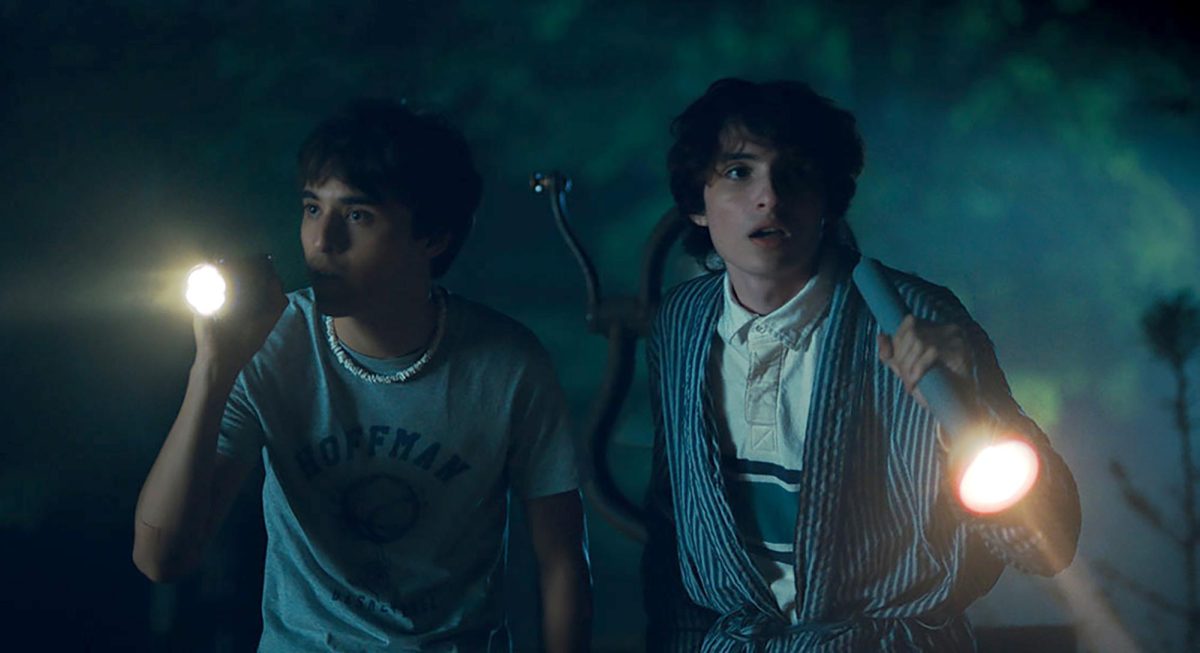The early 20th–century world of surrealism and scandal, backwoods Spanish villages and the bohemian Parisian art world are vividly illustrated in “Buñuel in the Labyrinth of the Turtles.” Directed by Salvador Simo, the animated biopic’s subject is Luis Buñuel, one of the most famous Spanish directors of the 20th century and a pioneer of surrealism and satire in film. Filmed in Spanish and French with English subtitles, the film focuses on the periods between Buñuel’s successes when Buñuel was struggling for funds and recovering from a damaged reputation. The movie offers a slightly underbaked but well-intentioned exploration of a turning point in Buñuel’s work and the relationship between filmmaking and ethics.
The year is 1930, fascism is on the rise and Buñuel (Jorge Usón) has just scandalized Paris with “L’Age d’Or,” his second surrealist film on the heels of his famous “Un Chien Andalou.” Facing a damaged reputation and lack of investors, Buñuel returns to Spain, which is only a few years away from civil war. Plagued by nightmares, he films “Land Without Bread” featuring the people of Las Hurdes, an impoverished region in northwest Spain. The “Labyrinth of Turtles” title refers to the maze-like rock huts in the Las Hurdes village that look like the backs of turtles.
Despite an ostensibly clear subject, “Buñuel in the Labyrinth of the Turtles” isn’t entirely sure what story it wants to tell. Threads from Buñuel’s life are picked up without deep examination. The film establishes Buñuel and Salvador Dalí’s rivalry, which begins after the pair worked together on “Un Chien Andalou.” Despite these moments, Dalí never makes an appearance, and the relationship isn’t further explained. Dalí’s subplot is lost on people unfamiliar with Buñuel’s legacy and muddles an otherwise clear story. The film also features flashbacks to moments in Buñuel’s childhood and his attempts to appease his unemotional father. But these cutaways are oddly placed and interrupt the movie’s timeline.
The film focuses more on Buñuel’s relationships with his friends than his origin story. The main plot is set into motion when Buñuel’s friend, anarchist Ramón Acin (Fernando Ramos), unwittingly becomes financier and producer of “Land Without Bread” after winning the lottery. The pair is joined by two cameramen, and the four’s goofy exploits are delightful as they joke and argue in Spanish and French. The conflict between Buñuel and Acin illustrates the ethical problem of their film project: the moral line between using the poverty-stricken people of Las Hurdes as props versus raising awareness of their struggles. The movie tries to establish that Buñuel himself is facing the same internal conflict between art and exploitation, but his personal journey is given a less satisfying ending. The disagreements between the two characters are better resolved than Buñuel’s character arc.
The hand-drawn, 2D animation style is perfect for developing the atmospheres of Paris and Las Hurdes. This basic style and the limited color palette — dusty pink, gray, blue and yellow — match the somber mood of Las Hurdes and place the plot firmly in the past. The movie also cuts in real footage of “Land Without Bread,” and the switch between animated fiction and live action documentary is captivating. The style also enhances the surrealism of Buñuel’s nightmare sequences in which elephants with skeletal legs roam Paris’s streets and glowing yellow butterflies burst through windows.
The animation style reflects the spirit of the film itself: simply drawn but still effectively communicating the spirit of Buñuel’s world. “Buñuel in the Labyrinth of the Turtles” is a bit too shallow to fully capture the surreal legacy of its subject, but it does its best to add insight into Buñuel’s intimidating and almost impenetrable character.




















